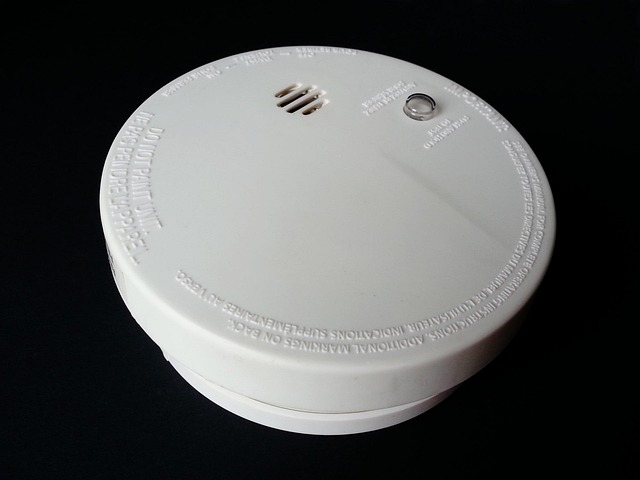Smart home alarms with parental settings offer a convenient and effective solution for parents concerned about online safety and privacy in today's digital era. These devices allow for granular control over screen time, content filtering, and location tracking, helping protect children from inappropriate material and excessive use. Interfaces should prioritize simplicity, featuring accessible menus, clear layouts, and front-and-center controls. Customizable alerts and visual feedback mechanisms enhance monitoring. Key players like Google, Amazon, Samsung (SmartThings), and Apple (HomeKit) offer integrated parental control features, enabling voice-activated management of connected devices, cameras, door locks, and media players for comprehensive security. Tailored settings ensure children's online activities align with safety guidelines while fostering digital responsibility.
In today’s digital age, smart homes are becoming increasingly prevalent, but with great technology comes the need for robust parental controls. With young users navigating online spaces more frequently, managing their digital experiences is crucial. This article explores the importance of parental controls in smart homes and delves into user-friendly interface designs that simplify this process. We’ll guide you through key features to look for, popular smart home systems with built-in parental settings, and provide a step-by-step approach to implementing and customizing these controls for optimal safety.
- Understanding the Need for Parental Controls in Smart Homes
- Key Features to Look For in User-Friendly Interface Design
- Popular Smart Home Systems and Their Parental Control Offerings
- Implementing and Customizing Parental Settings for Optimal Safety
Understanding the Need for Parental Controls in Smart Homes

In today’s digital age, smart homes are becoming increasingly prevalent, offering convenience and automation through interconnected devices. However, this interconnectedness also raises concerns about privacy and online safety, especially for parents protecting their young children. Smart home alarms with parental settings address these worries by providing a simple yet powerful tool to manage and monitor device usage within the household.
The need for parental controls in smart homes is driven by the growing accessibility of various devices, from smartphones and tablets to smart TVs and gaming consoles. With such a wide range of screens and online capabilities, parents must ensure their children are protected from inappropriate content, excessive screen time, and potential online threats. Easy-to-use interfaces for managing these controls empower parents to set boundaries, monitor activity, and foster a healthy digital environment, ensuring their peace of mind in the smart home realm.
Key Features to Look For in User-Friendly Interface Design

When designing an interface for managing parental controls, especially in smart home devices like alarms, simplicity and intuitiveness are paramount. Key features to look for include easily accessible settings menus that allow parents to quickly adjust restrictions based on time of day or specific user profiles. A clean layout with clear visual cues ensures parents can navigate through various options without getting overwhelmed. Think of it like a well-organized dashboard where crucial controls are front and center, making it simple to enable or disable features like screen time limits, content filtering, or location tracking.
Additionally, a good interface should offer customizable alerts and notifications tailored to the family’s needs. This could mean receiving reminders about scheduled device downtime or specific alerts when certain types of content are accessed. Incorporating simple yet effective visual feedback mechanisms—like color-coding or icon changes—can also help parents monitor their settings’ effectiveness at a glance. These user-friendly elements not only simplify the management of smart home alarms with parental settings but also foster a sense of security and peace of mind for both parents and children.
Popular Smart Home Systems and Their Parental Control Offerings

In today’s digital age, smart home systems have become increasingly popular, offering families a convenient way to automate and secure their living spaces. Many of these advanced home technologies include parental control features as part of their ecosystem, providing parents with tools to manage their children’s online activities and screen time. For instance, Google Home and Amazon Echo devices offer intuitive voice-controlled settings that allow parents to set limitations on internet usage and specific content access for their kids.
Additionally, smart home alarms with parental settings are game-changers in ensuring a safe online environment for children. Systems like Samsung SmartThings and Apple HomeKit provide comprehensive security solutions that include parental control apps. These applications enable parents to monitor and control devices connected to the smart home network, such as cameras, door locks, and even media players, ensuring a secure digital haven for their family.
Implementing and Customizing Parental Settings for Optimal Safety

Implementing and customizing parental settings on smart home devices equipped with alarm systems offers a layer of security tailored to family needs. Parents can easily adjust parameters like time-based restrictions, content filters, and activity monitoring through intuitive interfaces designed for simplicity. By setting specific rules, they ensure their children’s online activities align with safety guidelines while fostering digital responsibility.
These settings allow for granular control over various aspects of home networking, including which devices gain access to the internet, the types of content accessible, and the duration of screen time. Customization options cater to diverse family structures and parenting styles, enabling parents to create a safe digital environment that grows with their children’s evolving needs while leveraging the benefits of smart home alarms for enhanced security.
Smart home alarms with parental settings offer a modern solution to ensuring family safety without compromising convenience. By understanding the key features of user-friendly interfaces and exploring popular smart home systems, parents can easily manage and customize controls to create a secure environment for their children. Implementing these settings allows for a balanced approach to digital life, fostering both independence and protection in today’s connected world.
